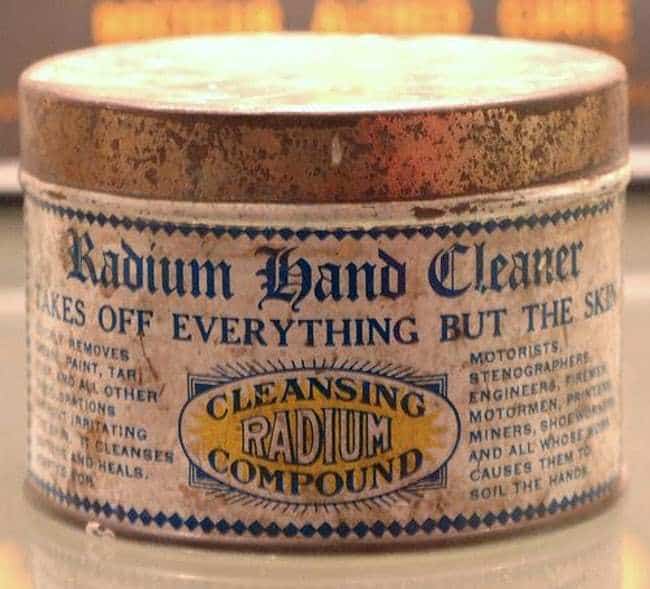
ADVERTISEMENT - CONTINUE READING BELOW
7. Radium was used in the early 20th century as part of cancer treatments, despite containing lethal levels of radioactivity
Radium, as the name suggests, is a highly radioactive metal, first discovered in 1898 by legendary French chemists Marie and Pierre Curie; Marie would famously die as a result of radiation poisoning caused due to her close interaction with the lethal chemical. In spite of these self-evident harmful properties, almost as soon as radium was discovered it begun being incorporated into products, first to induce a novelty fluorescent flow and subsequently for medicinal use.
Claimed, as with many discoveries during this time, to be a virtual panacea, with one advertisement promoting the health benefits of drinking radioactive water, radium, specifically radium bromide, was prominently used in early cancer treatments. As part of these medical procedures, notably by Howard Atwood Kelly, a founding physician of Johns Hopkins Hospital, dangerous quantities of radium contained in capsule form were surgically sewn into affected areas in a misguided attempt to treat cancers and tumors at the source. The effects of these surgeries were almost uniformly negative, with patients suffering from severe cases of anemia, the development of additional cancers, and even genetic mutations; among Kelly’s unfortunate patients, many of whom were killed as a direct result of their unethical exposure to radium, was his own aunt who died in 1904 shortly after undergoing surgery.

